April 21, 2023
(press release)
–
Running tab of macro indicators: 7 out of 20 The number of new jobless claims rose by 5,000 to 245,000 during the week ending April 15. Continuing claims increased by 61,000 to 1.87 million, and the insured unemployment rate for the week ending April 8 was up 0.1 at 1.3%. Seasonally adjusted housing starts fell slightly in March, by 0.8%. Chemistry-intensive single family starts, however, were up by 2.7% compared to the previous month. After a strong February, forward-looking building permits were down 8.8% in March, but single‐family authorizations were up by 4.1%. Permits for buildings with five or more units fell by nearly one-quarter (24.3%). Both starts and permits remained sharply lower than a year ago. According to data from the National Association of Realtors®, existing-home sales fell 2.4% in March to 4.44 million; this is down 22.0% Y/Y. Existing homes inventory was up slightly M/M (1.0%), or the equivalent of 2.6 months' supply at the current monthly sales pace. The Conference Board’s Leading Economic Index® fell for a 12th straight month in March, down 1.2% from February’s reading. Of the 10 components, only two provided weak positive contributions. The LEI was off 9.2% Y/Y. The Conference Board expects that “economic weakness will intensify and spread more widely throughout the US economy over the coming months, leading to a recession starting in mid-2023”. For the first time in five months, business conditions moved up, according to the April Empire State Manufacturing Survey, which reflects conditions in New York state. The general business conditions index increased thirty-five points to 10.8. New orders and shipments surged, and inventories increased. However, looking ahead six months, the region’s manufacturers do not anticipate improvement in business conditions. The Fed’s Beige Book is a compilation of regional assessments of economic conditions in each of the 12 Federal Reserve Districts. Some key take-aways follow here: Oil prices eased over the past week but remain higher than before OPEC’s recent surprise announcement to remove an additional 1 million bpd from the market. The lower prices reflected weaker economic news this week and renewed concerns about oil demand from the world’s largest consumer. U.S. natural gas prices were a little higher than a week ago but remain relatively low. Inventories remain robust, with the first inventory build of the year last week. The combined oil and gas rig count continued to slide for a third week in a row, down by three to 745. For the business of chemistry, the indicators bring to mind a red banner for basic and specialty chemicals. According to data released by the Association of American Railroads, chemical railcar loadings were up 5.3% to 33,206 for the week ending 15 April (week 15). Loadings were down 6.7% Y/Y (13-week MA), down 6.6% YTD/YTD and have been on the rise for 9 of the last 13 weeks. The U.S. Chemical Production Regional Index (U.S. CPRI) jumped by 2.6% in March following a 0.7% decline in January and a 0.9% gain in February, according to the American Chemistry Council (ACC). As nearly all manufactured goods are produced using chemistry in some form, manufacturing activity is an important indicator for chemical demand. U.S. manufacturing output rose 0.5% in March on a 3MMA basis. The 3MMA trend in manufacturing production was mixed, with output in several chemistry-consuming segments continuing to contract. Output continued to expand, however, in food & beverage, appliances, motor vehicles & parts, construction supplies, machinery, electronics, semiconductors, refining, iron & steel products, foundries, plastic products, paper, printing and apparel. The banner colors represent observations about the current conditions in the overall economy and the business chemistry. For the overall economy we keep a running tab of 20 indicators. The banner color for the macroeconomic section is determined as follows: Green – 13 or more positives For the chemical industry there are fewer indicators available. As a result, we rely upon judgment whether production in the industry (defined as chemicals excluding pharmaceuticals) has increased or decreased three consecutive months. ACC members can access additional data, economic analyses, presentations, outlooks, and weekly economic updates through ACCexchange. In addition to this weekly report, ACC offers numerous other economic data that cover worldwide production, trade, shipments, inventories, price indices, energy, employment, investment, R&D, EH&S, financial performance measures, macroeconomic data, plus much more. To order, visit http://store.americanchemistry.com/. Every effort has been made in the preparation of this weekly report to provide the best available information and analysis. However, neither the American Chemistry Council, nor any of its employees, agents or other assigns makes any warranty, expressed or implied, or assumes any liability or responsibility for any use, or the results of such use, of any information or data disclosed in this material. Contact us at ACC_EconomicsDepartment@americanchemistry.com. MACROECONOMY & END-USE MARKETS
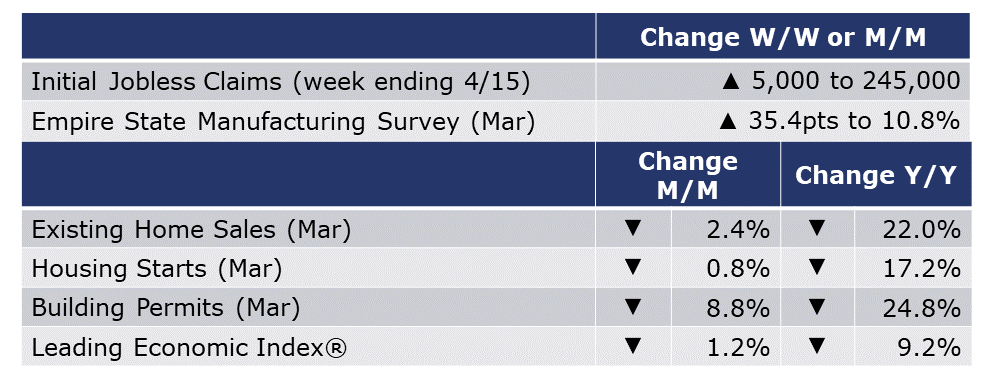
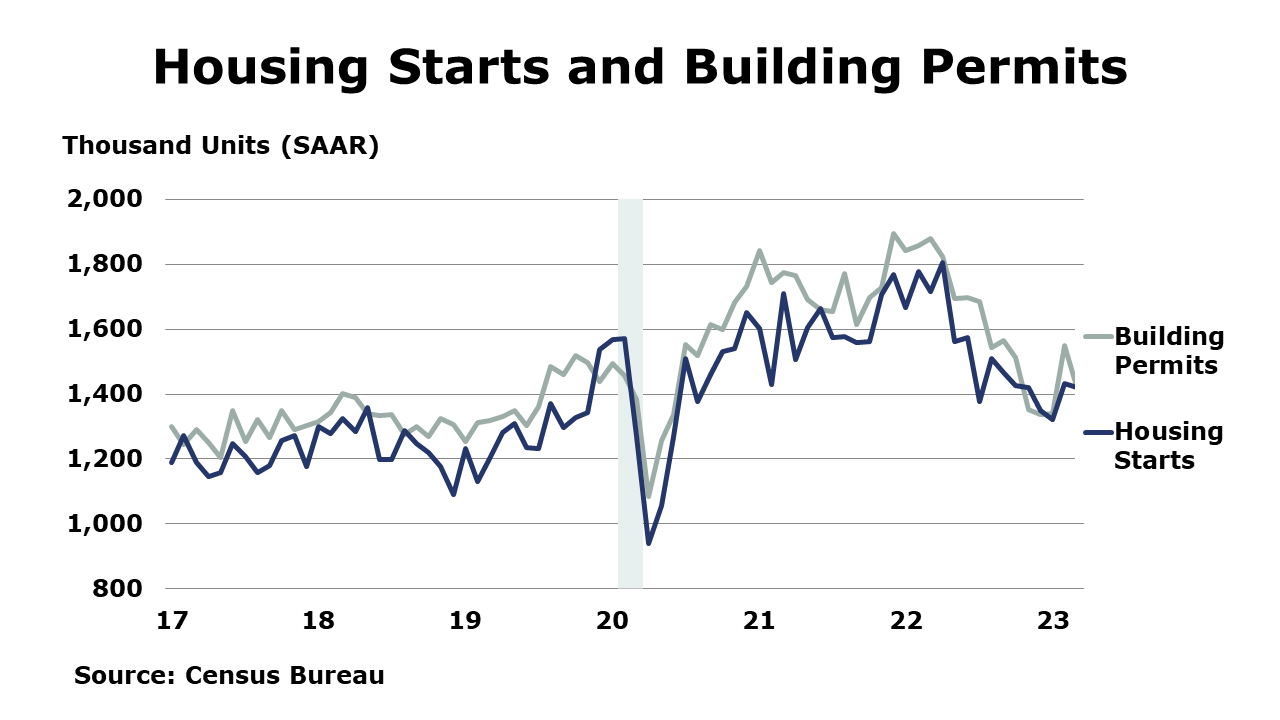
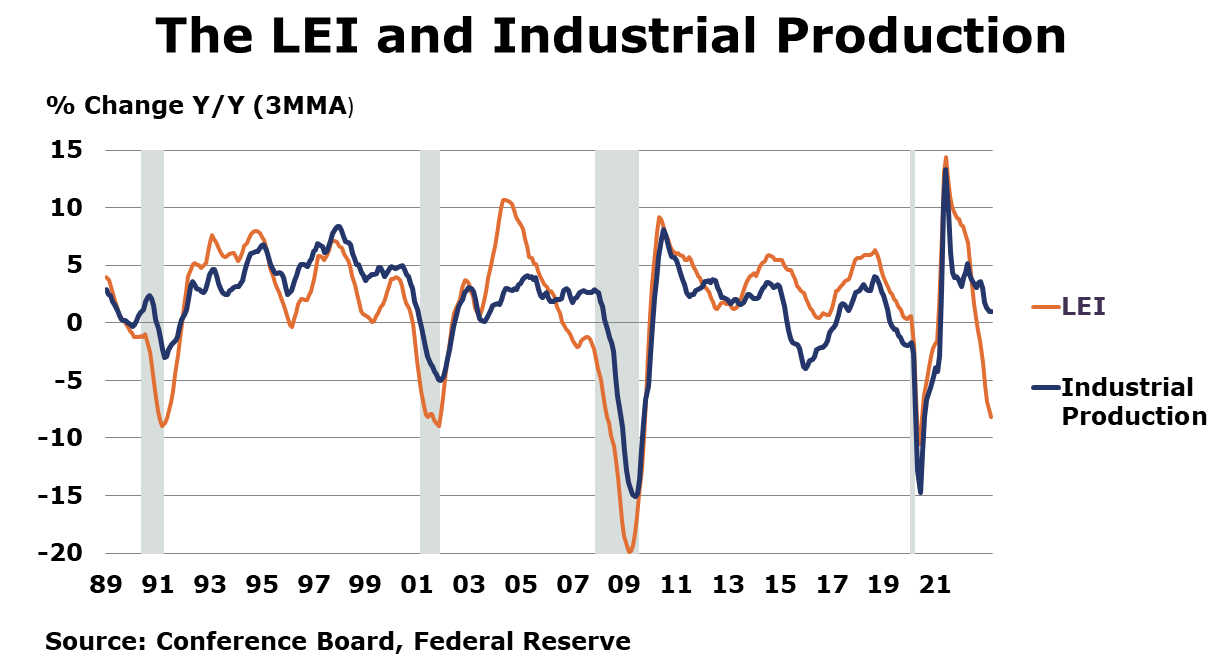
Federal Reserve Beige Book
ACC Survey of Economic Forecasters
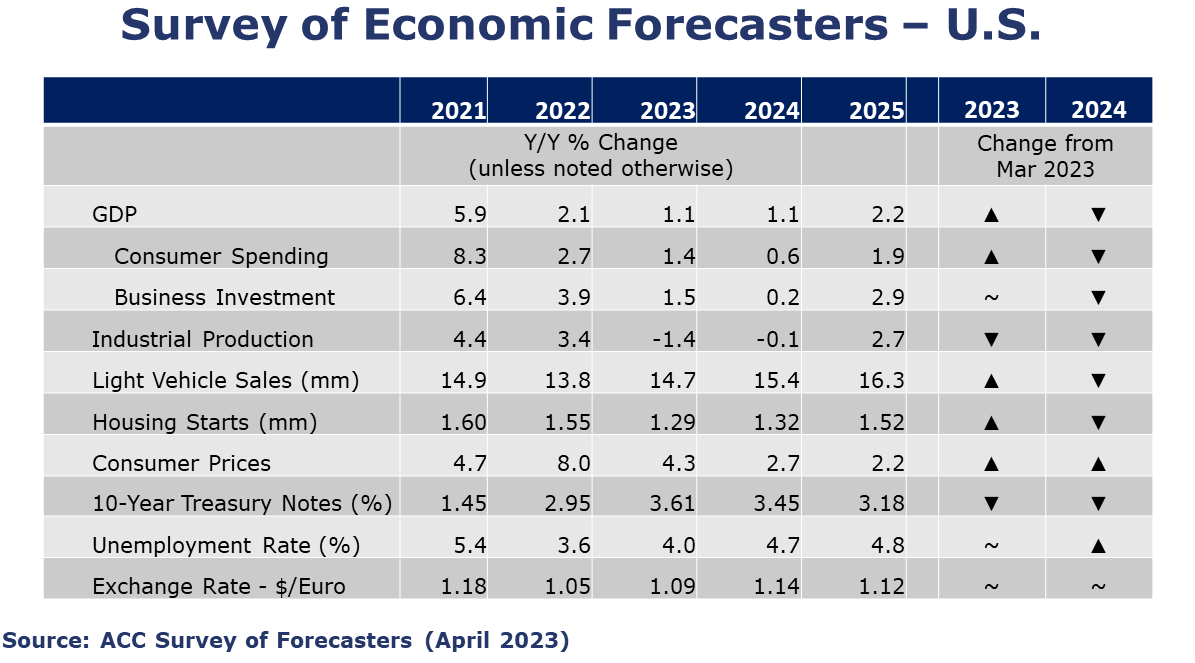
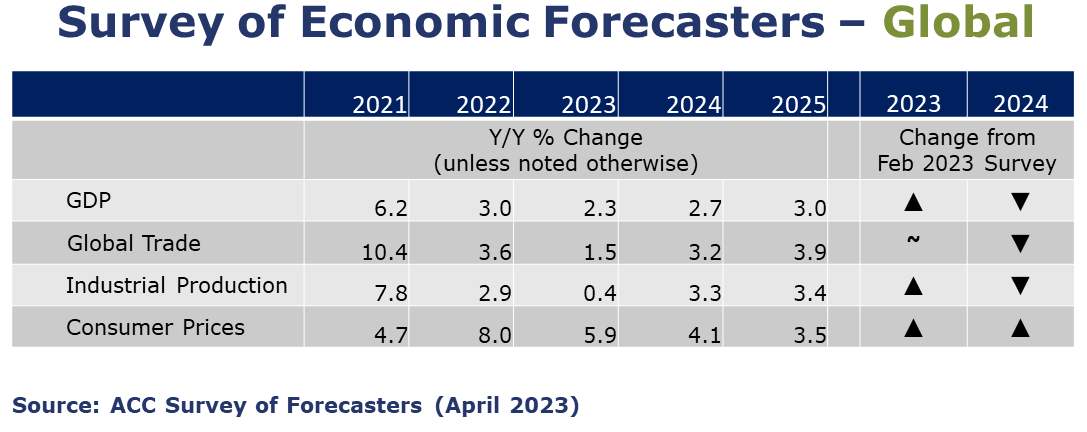
ENERGY
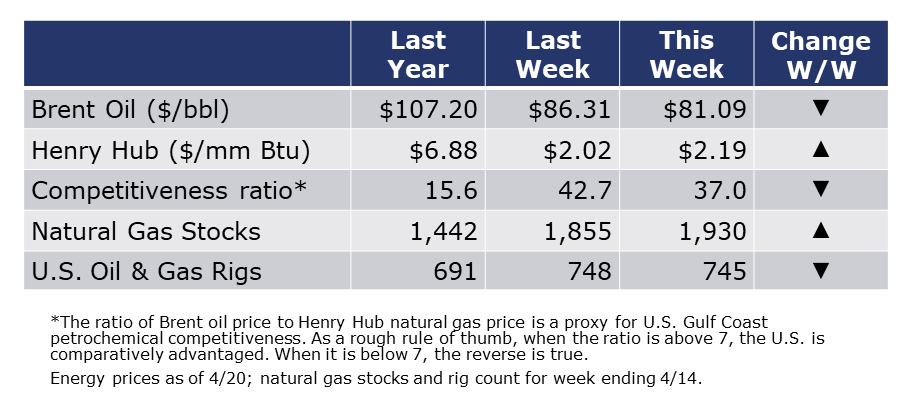
CHEMICALS

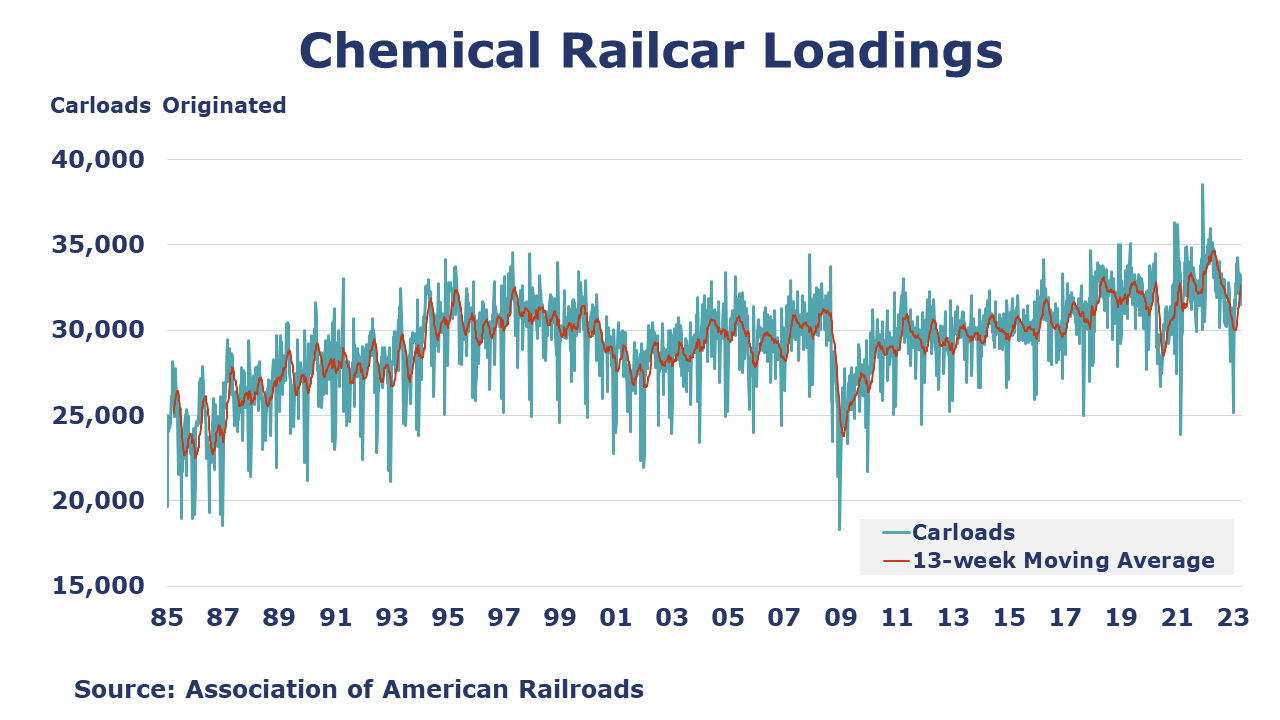
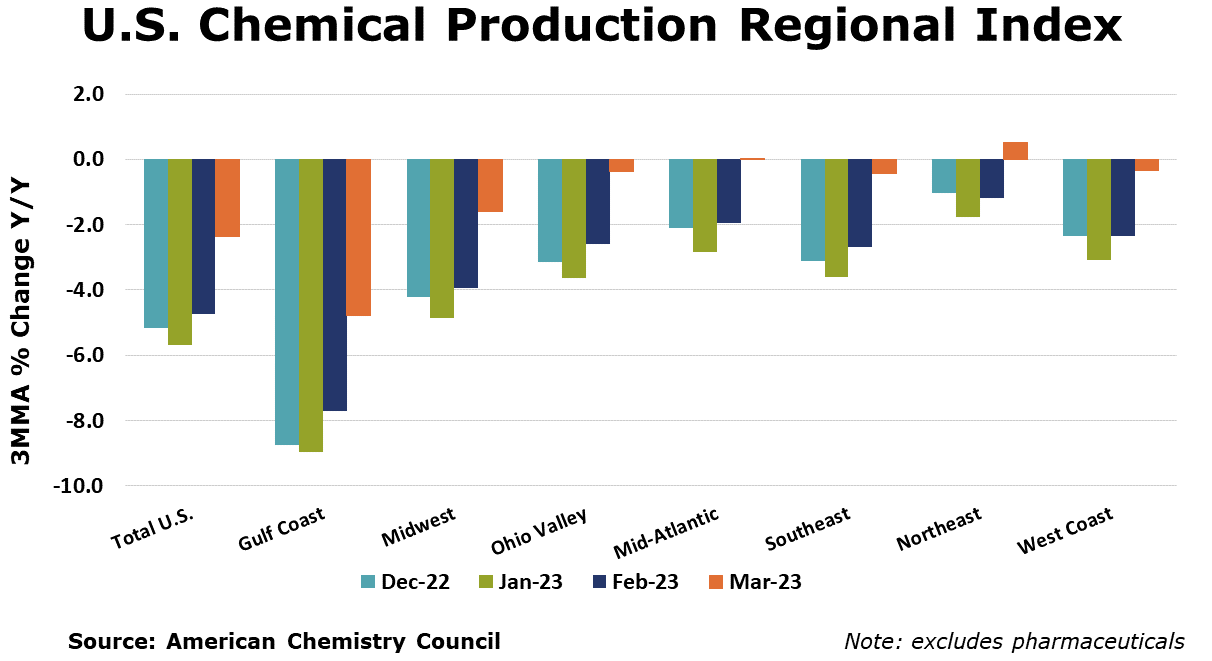
Note On the Color Codes
Yellow – between 8 and 12 positives
Red – 7 or fewer positivesFor More Information
* All content is copyrighted by Industry Intelligence, or the original respective author or source. You may not recirculate, redistrubte or publish the analysis and presentation included in the service without Industry Intelligence's prior written consent. Please review our terms of use.






